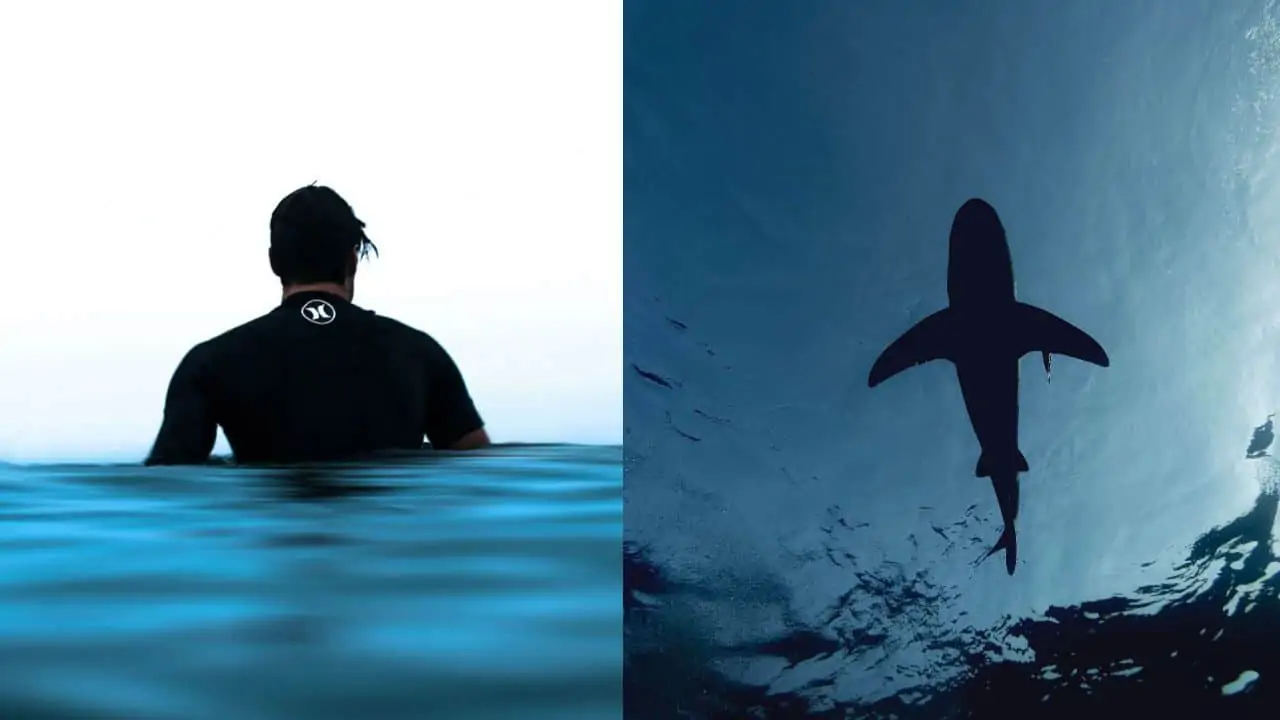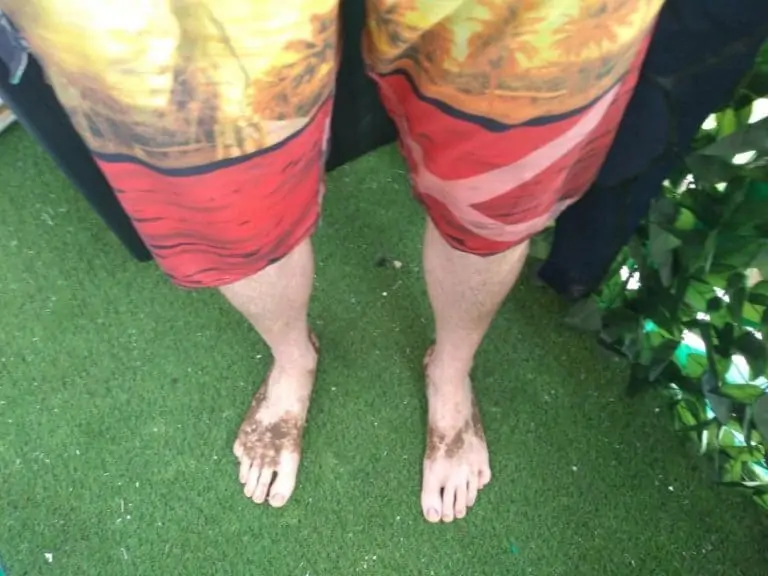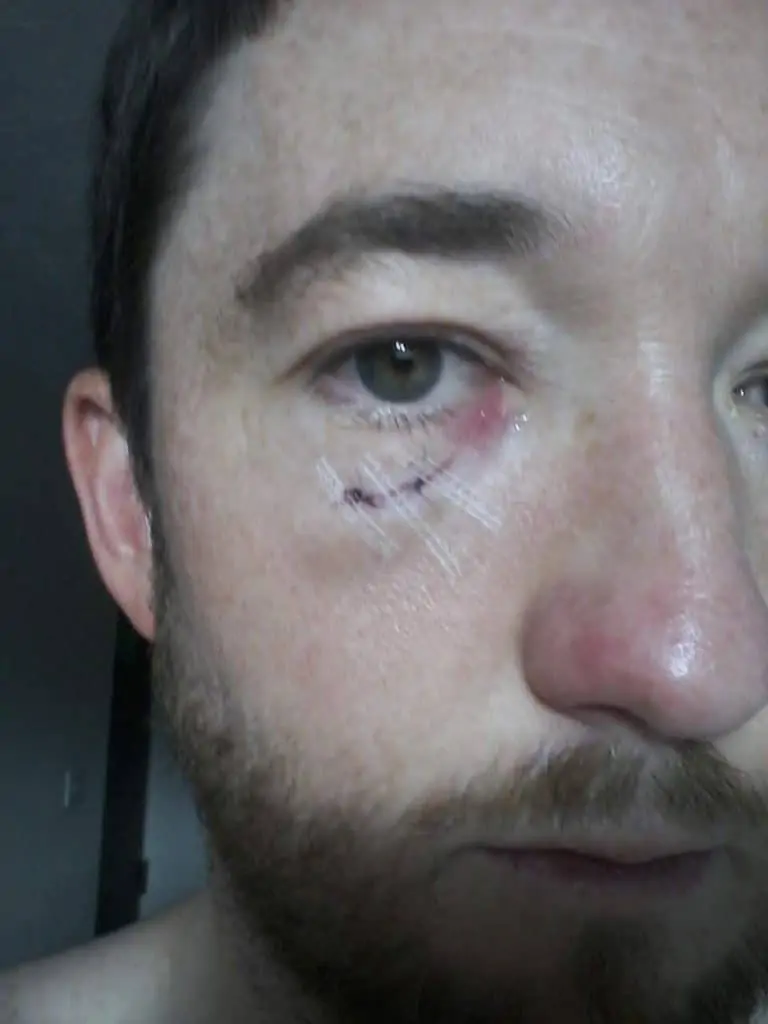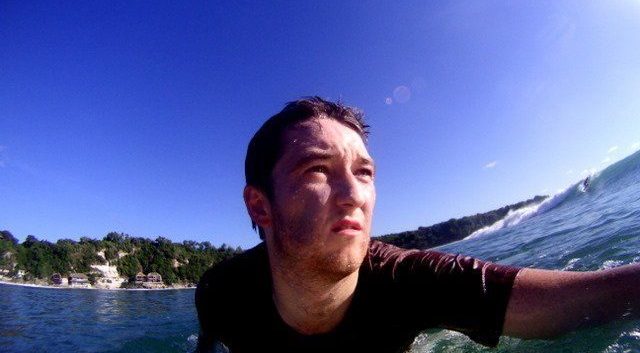Surfing and Sharks: Fact Check and Tips
Surfing in many places around the world is often connected in people’s minds with sharks and shark attacks.
However, the media coverage of these incidents can make them seem a little different to what they actually are in reality.
So, in this post, let’s look at all the common questions about surfing and sharks, drawing on research and evidence along the way to provide a fact check and some evidence-based tips.
Let’s get to it right away!
What to do if you see a shark while surfing?
It’s early morning and you’ve decided to get down to the beach and catch a few waves on your way to work. The water is fantastic and the reflection of the first sun rays look fantastic. When all of a sudden you see a fin. What do you do if you spot a shark in the water?
The first thing to remember may be the obvious one but it’s potentially life-saving advice: don’t panic. If you see a shark circling while you’re surfing, chances are that it’s just been driven by curiosity. If it really wanted to attack you, it would have likely done so without being noticed.
Try to remain calm and remind yourself that you have more power than you think, what happens next depends on your reaction.
Sharks are very inquisitive animals but they can also easily lose interest. Your priorities when seeing a shark while surfing should be:
- Lowering the chances of being seen as prey
- Getting yourself to safety
- Alerting others of the danger
Accelerated, messy swimming is a typical panic-triggered reaction that can worsen your position quickly. The vibrations created by splashes are like a bell for sharks that will more easily consider you a prey rather than another predator. Stay on your board and paddle calmly but swiftly to avoid this.
If there are other surfers nearby, try to warn them that there’s a shark in the water. If you’re closer to them than the shore, consider joining them. Just like most predators in the world, sharks are much more likely to attack isolated individuals than groups.
Of course, it’s paramount that you get to the shore as quickly and safely as possible. If you can catch a wave in, don’t think about it twice.
What to do if a shark swims towards you?
Sharks may choose to take a closer look at you to decide whether you’re food or not. So if you don’t want to become dinner, don’t act like it. Don’t play dead, and don’t cause erratic splashing.
Some suggest swimming directly towards the animal will make it believe you’re attacking it and convince it to go away. However, you should consider this move carefully, remember that your priority is to get yourself to safety.
Of course, if the situation worsens quickly and things get physical, give it all you’ve got, including hitting the shark with whatever you have at hand that may work as a weapon. Use your hands and feet as a last resource and aim for the eyes, gills, and nose, a shark’s most sensitive areas.
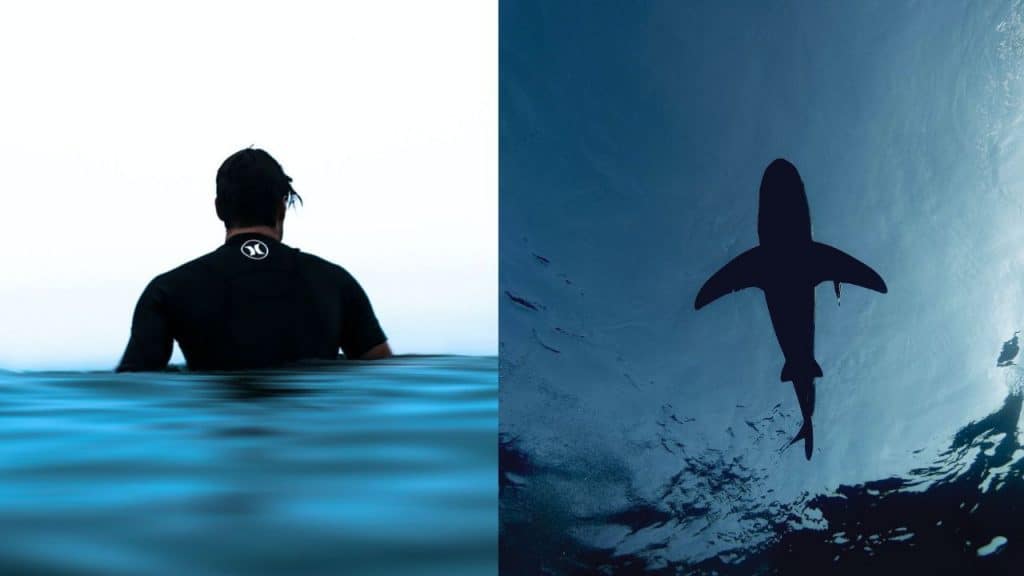
Photo Credit: Nariman Mesha (shark) and Jeremy Bishop (surfer)
How many surfers get attacked by sharks a year?
Shark attacks are rare and concentrated in a few high-density areas. On average, about 80 unprovoked shark attacks occur every year (Source).
An unprovoked attack is one that happens in the animal’s natural habitat with no human provocation on the shark (this is usually the case when the victim is a surfer.) Provoked attacks occur when humans initiate the interaction, touching the shark first, for example, to take pictures or remove fishing nets.
2019 was a pretty good year for humans. The International Shark Attack File (ISAF) reported only 64 incidents and confirmed once again that some regions are noticeably more dangerous than others (Source).
The vast majority of cases were reported in the US and Australia, and more specifically in Florida and New South Wales. Unfortunately, surfers and board sports aficionados are the most likely victims, making up 53% of the cases (Source).
What time of day do most shark attacks happen?
The majority of attacks happen between 6-8 am and on the weekend, specifically during the warmer months. However, this doesn’t mean that surfing or swimming at other times ensures a shark-free experience.
In fact, the data is the result of human activity rather than shark habits, because those are the times when more people come out to play and surf.
Should you be afraid of sharks?
Sharks are skilled predators and considerably stronger creatures than humans. Of course, surfers and swimmers should be aware of the danger and take all possible precautions to minimize it.
However, there is no reason to panic and avoid the ocean altogether. The statistics show that the chances of getting bit by a shark are very low and there are things you can do to stay out of trouble.
How do you survive a shark bite?
In the very unlikely and unfortunate case a shark actually bites you, there is a good chance you can survive the experience. Here’s what to do:
- Reach the shore as quickly as possible
- Tell others immediately so that they can seek medical help for you
- Apply pressure if possible, or ask someone to do it for you
Are sharks active at night?
The Shark Accident Victim Network reports strong evidence that sharks like to get closer to masses of land like the shore or an island at nighttime.
However, consider that there are over 400 species of sharks, all with their own habits. Swimming during the day will not necessarily protect you from an attack.
What are the chances of getting bit by a shark while surfing?
If you’re wondering exactly how likely it is that you’ll get attacked by a shark next time you go surfing, the National Geographic did the maths for you.
Your odds of being killed by a shark in the surf are one in 3.7 million.
Statistics are a funny thing though and you should take them with a grain of salt. It’s true that incidents are rare and that, for some reason, the vast majority of them involve men rather than women.
However, if you’re a lady surfer getting in the water in Florida after sunset every day, you should not let your guard down.
What color surfboard attracts sharks?
The truth is, there’s a whole lot we don’t know about sharks. We can try and figure out a pattern from the data we have on past attacks but that’s no guarantee that shark behavior may change in the future.
At the moment, we believe that some designs like the zebra patterns sold by Rock-It surf may act as a shark deterrent. We also know that seals are sharks’ favorite snacks, so grey surfboards are not particularly popular.
Why do sharks attack surfboards?
As mentioned above, sharks eat seals and that may have something to do with the fact that they sometimes attack surfboards. These are speculations, though, and it’s not been 100% proven scientifically.
How can you tell if a shark is near?
A stealth predator is a carnivorous animal that sits and waits patiently until the circumstances are perfect to surprise its prey. That’s the reason why stealth predators are also called ambush hunters.
Unfortunately for seals and, sometimes, surfers, sharks are stealth predators. This means that it’s very unlikely to see a shark come if they have decided to attack. The good news is, if you see a fin in the water, the shark is probably just exploring and not actively hunting you.
However, humans can rely on each other. Watch out for signs on the beach and pay attention as someone may be trying to warn you of a shark in the water.
What ocean has no sharks?
There’s no such thing as an ocean with no sharks in it. That doesn’t mean that all waters in the world are infested with deadly monsters ready to eat you. Some shark species aren’t even considered predators and others are so small that they are prey for other animals (humans included). Fatal unprovoked attacks on humans are mostly caused by the great white, tiger, and bull sharks.
There are some amazing places to surf without sharks (or at least, with no dangerous sharks) around the world. Europe and the Mediterranean are considered very safe shark-wise. The last fatal shark attack recorded in France occurred in 1700 and Portugal and Ireland have no records at all of such incidents.
What beach has the most shark attacks?
We’ve already seen how some countries register more shark activity than others. However, there are some specific beaches that are at high risk (Source).
The spot that holds the record for the highest number of reported incidents is New Smyrna Beach in Florida. It’s worth noting though that developed countries like Australia and the US have more modern and efficient documentation systems than developing island and coastal nations so the data may not reflect reality.
What ocean has the most sharks?
The ISAF has consistently found that the US is the country at the highest risk of a shark attack. However, it also highlighted a great difference between the East and the West coast. In 2018, for example, while 41 incidents were reported, only 4 were carried out in the waters of the Pacific. The majority of cases were recorded in the Atlantic Ocean (Source).
Why is the Atlantic Ocean so dramatically riskier? There are several reasons. For example, some of the Atlantic’s currents, most notably the Gulf Stream, push warm water closer to shore. This is the type of water favored by bait fish. And where there’s bait fish, there are sharks. Even though these sharks, for example blacktips, are of a smaller size compared to those involved in the Pacific attacks, they contribute to the Atlantic’s tally.
More attacks don’t necessarily mean more sharks (other oceans may have a higher population density, although this is very hard to confirm) but the information is certainly useful to those who are after an uneventful surf session.
Related Questions
Can sharks smell blood? Yes, they can, but it’s not a feature of sharks only. In fact, they have the same sensitivity for blood as other fish — 25 million and one part per 10 billion, although some shark species can be more sensitive than others.
What are the most shark-infested beaches in California? Shark encounters have been reported across California (in fact, in every county since 2000) but the most affected beaches are Bolinas and Surf Beach near Vandeberg Air Force.
Are there sharks on the East coast of the USA? Yes, there are sharks swimming along the East coast. Among the most dangerous for humans, great white sharks head south from Canada during the winter each year.
